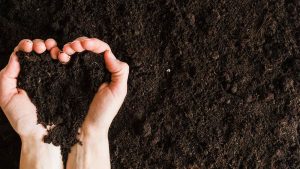It is very easy to think of getting a new sofa or TV for our space. But we usually neglect the most important thing in our home! The air/oxygen!
The easiest but also the most cost-effective way to improve the air quality in our home are plants.
In addition to improving our health, they increase our concentration, reduce stress, reduce noise, and help us breathe more easily when they are in the room. Specific plants can remove up to 87% of the toxins found in the air within 24 hours!
The survey for the most beneficial plants was done by NASA after two staggering statistics showing that 1. Indoor air quality is the fifth cause of illnesses 2. Indoor air pollutants are 2 to 5 times larger than those in outdoor places.
List of detoxifying plants:
- Snake plant (Releases oxygen at night; good for bedrooms, Living rooms, kitchens)
- Spider plant (Good for offices, near bookcases & desks, etc.)
- Peace lily (Removes mold from the air, good for bathrooms or damp areas in the house)
- Bamboo or reed palm (Good for offices, near bookcases & desks, near rugs etc)
- Weeping fig (office, near desks, etc.)
- English ivy (Improve symptoms of allergies or asthma, good for dorm rooms, home offices, near bookcases)
- Aloe Vera (Like snake plant, releases oxygen at night, good for bedrooms, Living rooms, kitchens)
- Chinese evergreen (office, near desks, next to the washing machines or drying cloth racks, etc.)
- Golden pothos (office, near desks, etc.)
- Heartleaf philodendron, Selloum philodendron & Elephant ear philodendron (Best for living spaces of new or renovated homes with new floors, walls, carpets, etc.)
- Janet Craig dracaena, Warneck dracaena, Red-edged dracaena & Cornstalk dracaena
- Gerbera daisy (Releases oxygen at night; Best for bedrooms to refresh night-time air or balconies & living rooms)
Every plant has different properties and faces different toxins. For example, English ivy, gerbera daisies, pot mums, peace lily, bamboo palm, and Mother-in-law’s Tongue were found to be the best plants for treating air contaminated with Benzene. The peace lily, gerbera daisy, and bamboo palm were very effective in treating Trichloroethylene. Additionally, NASA found that the bamboo palm, Mother-in-law’s tongue, dracaena warneckei, peace lily, dracaena marginata, golden pathos, and green spider plant worked well for filtering Formaldehyde.
The 3 toxins: Formaldehyde, Benzene, and Trichloroethylene. Formaldehyde is used in many building materials including rugs, vinyl, cigarette smoke, grocery bags, particleboard, and foam insulations. Additionally, many cleaning products contain this chemical. Benzene & Trichloroethylene is a common solvent found in oils, paints, adhesives, inks, and varnishes. Benzene is commonly found in high concentrations in study settings, where books and printed papers abound.
How many plants?
Proposals vary according to your goals.
- To improve health and reduce fatigue and anxiety, place a large plant (pot with a diameter of 8 inches or greater) per 12 square meters. In the office or classroom, place the plants so that each person has green in his field of vision.
- To clean the air, use 15 to 18 plants in pots of 15 to 20 cm diameter for a 170 square meter house. This is about a large plant every 9 square meters. You can achieve similar results with two smaller plants (in pots of 10 to 12 cm in diameter).
Diagrams:
Take a look at the harmful chemicals found in the air in our home, the harmful effects they have on our body and the plants that face them.
Sources:




